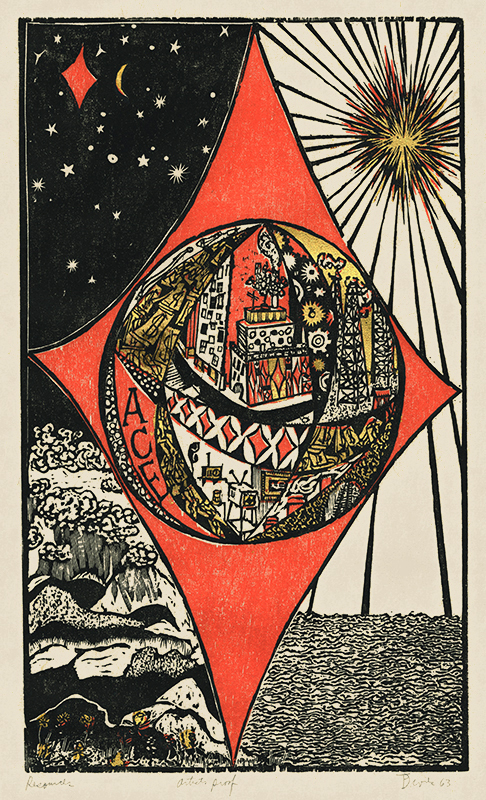
19th, 20th & 21st Century Fine Prints
707-546-7352 · fax 707-546-7924 · web: www.annexgalleries.com · email: artannex@aol.com
Resources (from the portfolio 'Cards of Life, Cards of Death') by Theodore Peter Davies

Resources (from the portfolio 'Cards of Life, Cards of Death')
Theodore Peter Davies
Resources (from the portfolio 'Cards of Life, Cards of Death')
Theodore Peter Davies
1928 - 1993 (biography)"Resources" is one of 25 color woodcuts done by Ted Davis between 1962 and 1967 which he published both individually and as a portfolio titled 'Cards of Life, Cards of Death.' He based the portfolio on a pinochle deck. Each print was intended to carry a "recognizable narrative and formative images, which are symbolic in many ways which tradition has associated with the particular card."
"Resources", to which the artist hand-applied gold leaf, was connected to the Ace of Diamonds in Davies' deck. Helen A. Harrison, writing for The New York Times reviewed the prints on July 12, 1981: "Choosing a pinochle deck to maximize the number of face cards, Mr. Davies has created a complex study of the relationship of individuals to modern society, showing each member to be personally responsible for his or her destiny and yet dependent on external, seemingly uncontrollable forces. The combination of chance and skill that characterizes the card game is here an analogy for the game of life.
Mr. Davies's ideology is standard. The villains are big government, big business, the pleasure-seeking gambler, and the materialistic bourgeois, while the positive aspects of human life - labor, the family, learning, love, the spirit - have a less physical dimension that transcends worldly problems. However, there are many subtleties to which such a simplified reading cannot do justice, and close study is repaid by many delightful discoveries in both form and content.
As a student of George Grosz and Harry Sternberg, Mr. Davies evidently acquired both an impressive technical facility and a deeply humanistic point of view, and he weaves his complex story with a strong, sure sense of design and effectively developed imagery."
